Table of Contents Show
Utah is a state filled with incredible landscapes and is home to five national parks. It’s no wonder so many tourists are planning an RV trip to Utah!
Today we want to share a few things you might keep in mind when making a plan for your RV trip to Utah! Let’s get to it!
What National Parks Are in Utah?
Did you know that Utah has the third most national parks of all 50 states? Let’s look at each of the five parks that call Utah home.
Arches National Park
Location: The Arches National Park Visitor Center sits five miles north of Moab in southeast Utah.
Key Features: Arches National Park is home to 2000+ natural rock formation arches.
Ranger-led programs, guided walks, scenic drives, and incredible viewpoints from short and long trails are all great ways to spend your time there.
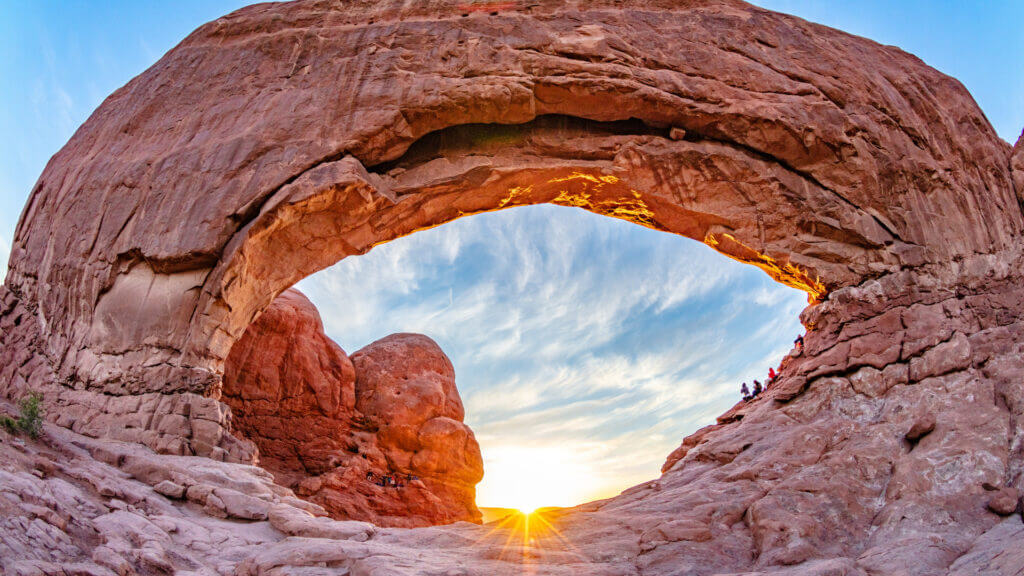
Bryce Canyon National Park
Location: The Bryce Canyon Visitor Center has an elevation of 7,894 feet in southern Utah and is approximately 270 miles from both the Las Vegas and Salt Lake City airports.
Key Features: Bryce Canyon is known for its scenic drive, which offers incredible views of its crimson-colored hoodoos.
Hoodoos are the unique rock formations you’ll find all over southern Utah.
If you prefer to experience the hoodoos at a closer view, you can hike miles of trails into the valley for a unique perspective of these rock formations.
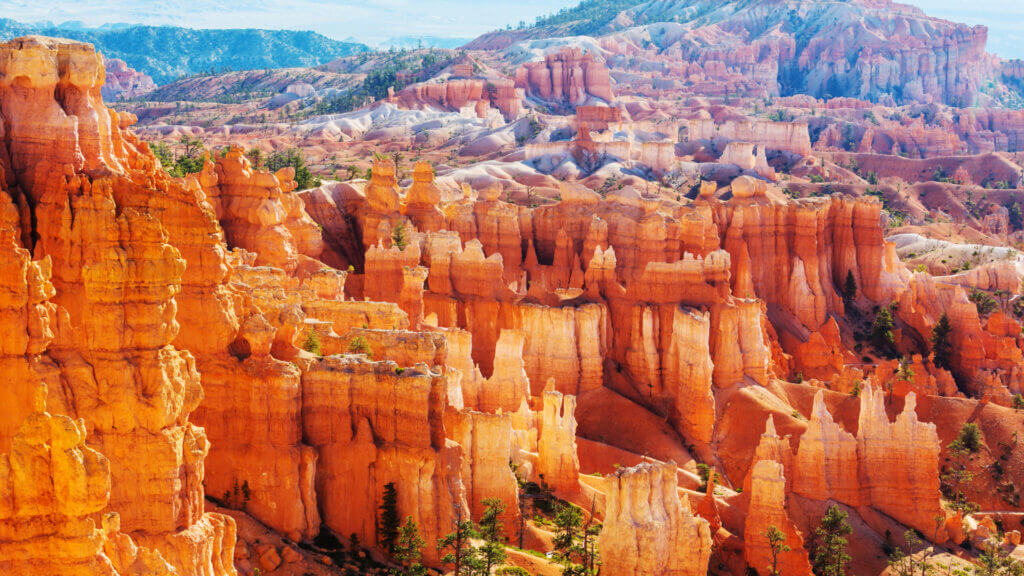
Canyonlands National Park
Location: The Canyonlands National Park Visitor Center is in southeast Utah, approximately 30 miles southeast of Arches National Park in Moab, Utah.
Key Features: Canyonlands National Park is 337,598 acres and provides stunning views of canyons, mesas, buttes, fins, arches, and even spires.
You’ll experience much of the famous southern Utah terrain, but it can take two to six hours by car to see them all due to several river crossings.
Experiencing all that Canyonlands will require 4-wheel drive and a high-clearance vehicle. There are multiple hikes for those that want to see the park on foot, too.
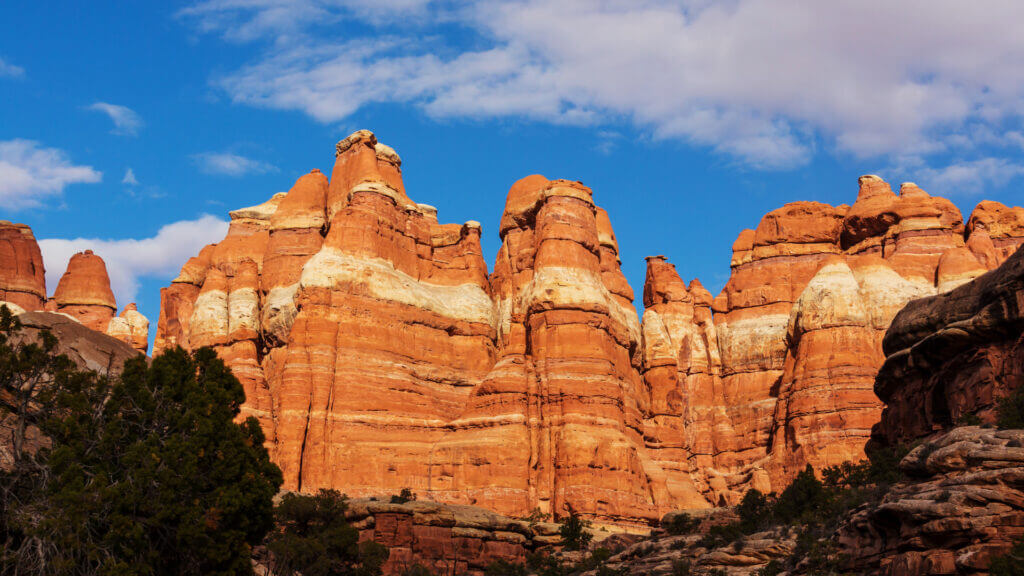
Capitol Reef National Park
Location: The Capitol Reef National Park Visitor Center is in Torrey, a town in central Utah. The park is almost squarely between Bryce Canyon National Park and Canyonlands National Park.
Key Features: Capitol Reef features miles of hiking trails, both rugged and easy. You’ll also find an apple orchard that the park uses to bake and sell treats seasonally.
Ranger-led programs will educate both children and adults on the history of the park and the many animals that call it home.
Between hiking, wildlife viewing, horseback riding, and rock climbing, you’ll have no problems filling your activities schedule!
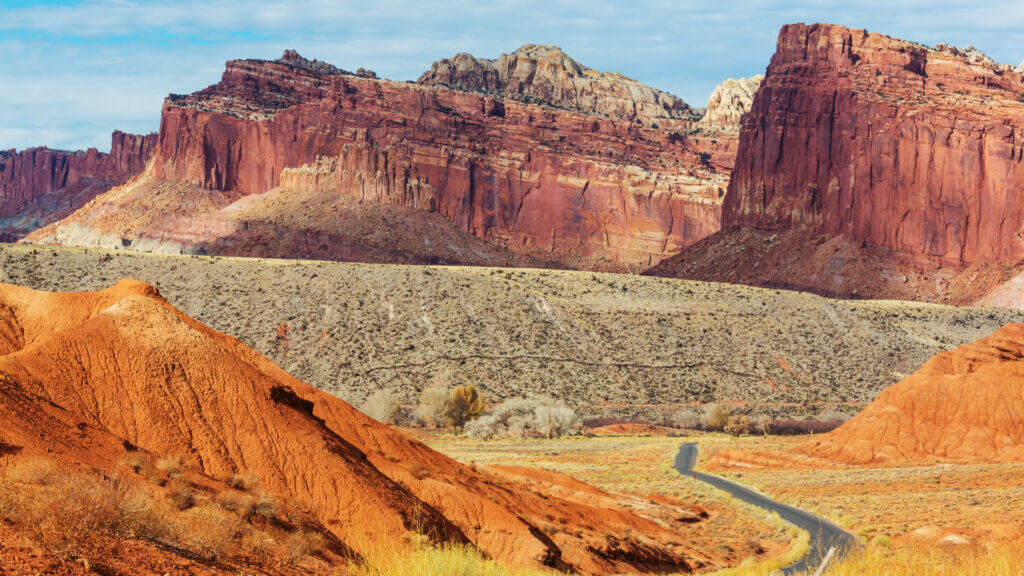
Zion National Park
Location: The Zion National Park Visitor Center is in southwest Utah in Springdale. This beautiful national park is just north of the Arizona border and approximately 60 miles east of St. George, Utah.
Key Features: Zion is a must-see when planning your RV trip to Utah. Many people flock to Zion National Park for canyoneering, rock climbing, or backpacking. (Please note that each activity requires a special permit.)
These are all great ways to experience the park and provide unique viewing opportunities.
However, the park also features a beautiful scenic drive and several easy hikes that allow everyone to experience this park’s beauty.
For the Thrill Seekers: If you’re up for it, you have to complete the terrifying Angel’s Landing Hike while visiting Zion. Keep in mind, this one isn’t for the faint of heart!
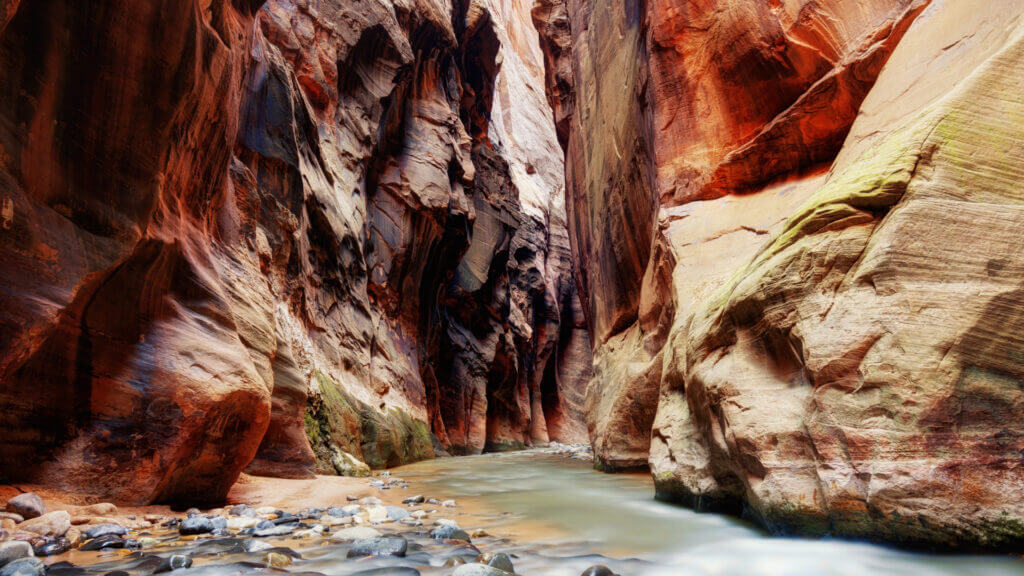
When Should You Visit Utah?
Visiting Utah’s national parks in one trip can be tricky due to weather conditions, crowds, and the sheer expansiveness of the land.
Spring and fall are the best times to visit the parks in more favorable weather and with fewer crowds.
Keep this in mind since experiencing Utah during peak travel crowd levels, and unfavorable weather can put a damper on your trip.
During the summer, Utah’s national parks experience increased crowds and excessive heat.
Tourists should limit hiking during these times, as dehydration and heat stroke are common during these months.
If you plan to visit during summer, be prepared for increased crowds, and bring plenty of water.
Several inches of snow and ice can cover many Utah national parks in winter, especially at higher elevations.
These conditions can cause road or trail closures, which could potentially render popular attractions inaccessible.
Crowd levels are substantially lower during the winter, but many local restaurants and businesses that rely on tourism will likely be closed for the season.
How to Plan Your Road Trip Route
Planning your route will significantly depend on where you start your trip.
If you start from the north and travel south, the best order to see the parks would be Arches, Canyonlands, Capitol Reef, Bryce Canyon, and Zion.
If you’re starting from the south and traveling north, it would be best to travel in this order: Zion, Bryce Canyon, Capitol Reef, Canyonlands, and then Arches.
Your RV trip to Utah will be amazing no matter what, but it’s worth it to see as much of the state as possible. And since you’re already out there, why not experience and appreciate the uniqueness of each national park in one go.
Pro Tip: Use an RV travel planning app like RV Life Trip Wizard that will plan an RV safe driving route and help estimate fuel costs.
How to Book Your Campsites
If you’re planning your RV trip to Utah during peak seasons, you’ll regret not booking your sites months in advance.
You’ll struggle to find available campsites, especially on weekends and at campgrounds close to the parks.
You’ll potentially end up staying a considerable distance from the parks, which will take away from your exploration time.
The national parks offer campground suggestions on their park-specific sites. We think one of the best ways to experience a national park is to stay the night in it.
Many of the national parks offer campgrounds with varying amenities and site lengths. Plan well in advance if you hope to camp as close as possible to any of Utah’s national parks.
Alternatively, Choose Campgrounds or RV Parks Outside the National Park
If you can’t acquire a campsite within a national park, there are plenty of campgrounds outside as well.
Using a resource like Campendium can help you locate campsites and discover alternatives to in-park campgrounds.
Utah is home to some of the best Bureau of Land Management (BLM) camping opportunities. These are often free or incredibly cheap camping spots.
You may need to purchase a camping permit or check in with a ranger, but dispersed camping in Utah is a great way to camp close and save a few bucks.
Many of these camping locations provide views of landscapes equal to what you’ll see while exploring Utah’s national parks.
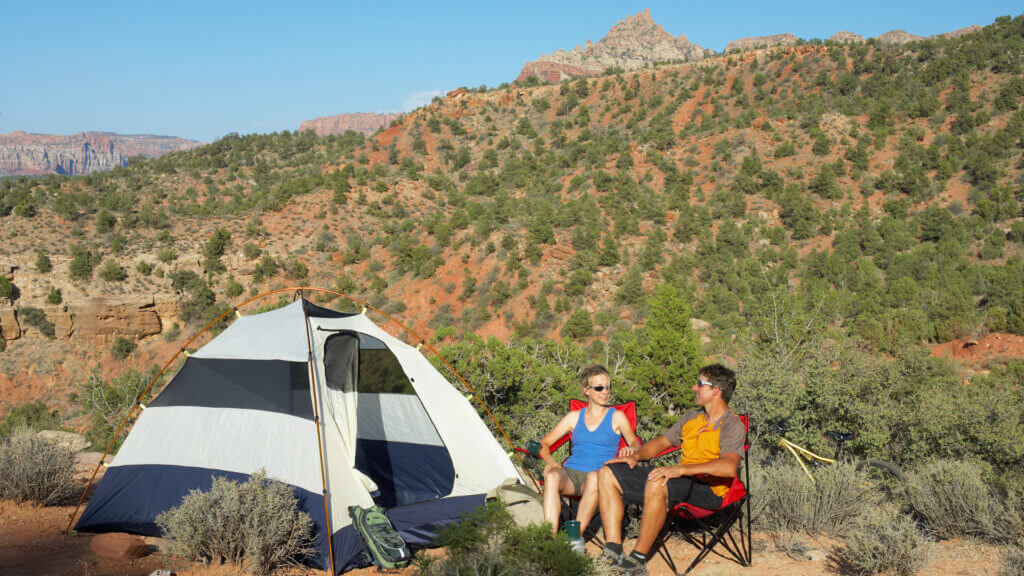
What Entry Permits/Passes Do I Need to Get into the Parks?
Each of the national parks in Utah has an entrance fee ranging from $20 to $35 per private vehicle.
However, for $80, you can purchase an annual interagency pass that will give you access to the parks with the title “national park” and 2000+ federal recreation sites.
You might also hear this pass called an America the Beautiful pass, and it’s an excellent value for frequent national park visitors.
Ultimately, visiting all the Utah national parks in one trip is an incredible adventure that you’ll remember for years to come.
If you could spend a day visiting one of Utah’s national parks, which would you pick?




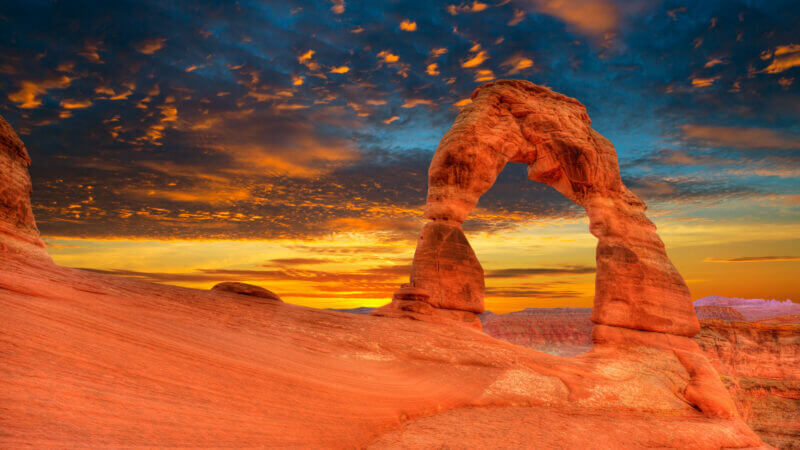

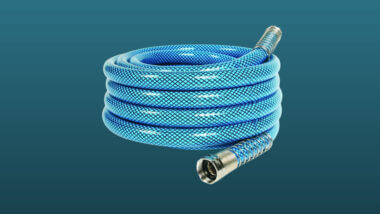
I am trying to plan a RV trip to Utah, & want to make reservations ahead of time, but have no idea how long to spend in each location. How can I make plans if I’ve never been there? I’m so stressed out about to whole thing.